Overview
A small mountain town nestled near the Eastern edge of the Canadian Rockies, Banff is a fantastic destination for all kinds of travelers. But if you are into hiking, especially alpine hiking, Banff is not to be missed. I recently visited with a group of friends and, despite challenges with the weather, we had a remarkable trip that left us wanting to go back. This itinerary is for a long weekend, but feel free to adapt it to your own shorter or longer plans.
One of the best things about Banff as a destination is that it’s just 90 minutes or so away from a major airport.
Flying into Calgary (YYC) is a little more expensive than some domestic flights for Americans, but it’s easy to find a round trip fair from most major metropolitan areas in the US for under $400.
Location
Banff, Alberta, Canada
Activities
Hiking, Exploring, Eating, Climbing
Duration
4-5 days including travel both ways.
Getting There
On a shorter trip, particularly a long weekend, being able to get to your destination relatively early in the day is a good way to make the most of your holiday time. With some planning and an early start, you can be in the mountains by 2:30 or 3 pm—and even squeeze a hike in! All other things being equal, this makes Banff fairly unique among major parks in the North American West.
There are basically three options for getting to Banff proper:
- Public Transportation: From downtown Calgary, you can take a $10 (CAD) shuttle bus to Banff, but it only runs from May until early September.
- Banff Airporter: This commercial shuttle runs multiple buses per day from YYC to several spots in Banff. It’s more expensive than the public option, but it’s also more convenient. The cost is around $50/person in USD, but kids 6-17 are half price. Kids under 5 are free.
- Car Rental: This is the option we chose. We rented a minivan through Turo so we could explore the Icefields Parkway and get to trailheads located farther away. I would highly recommend this as you’ll be able to spend more of your time in the wild and less waiting on buses.
Where to Stay
Banff has a pretty broad range of lodging options, but because there just isn’t that much land to build on, they all tend to be fairly expensive. On the low end, there are several respectable hostels, including the HI Banff Alpine hostel and the Samesun Banff. Expect to pay between $40 and $70 CAD/night for a bed in a shared room. At the high end, there are the magnificent Fairmonts, one at Banff Springs and another up the highway at Lake Louise. They can run upwards of $600 CAD/night for small rooms, but they also offer services and locations that you can’t find elsewhere.
We ended up checking out two places—the Delta Banff Lodge, which is a Marriott Bonvoy property, and the Mount Royal Hotel, a historic hotel operated by a niche hotel group called Pursuit. The Delta has since closed, likely for some updating, but I would recommend both. Neither hotel was particularly luxurious–the Delta offered bigger, quieter rooms and was a few minutes’ walk from Central Banff.
The Mount Royal was hipper with a rooftop pool and bar, but it had smaller rooms and more noise. It definitely had the better location, and I would probably prefer it for a similar price. We mostly just used the hotels for crashing after long days out. If that’s your plan as well, there are plenty of options.
Note: During peak season, hotels book up very early. Consider reserving six or more months in advance. If the weather is cloudy or rainy, hotels will have cancelations, so you can snag a room at the last minute for quite a bit less money than you could if booking ahead. But if the weather is glorious, you might not get your preferred room (or any room).

Day 1: Getting Your Bearings (and your Bear Spray)
This itinerary assumes you’ll arrive sometime in the early afternoon. It takes about 90 minutes to get all the way to Banff from YYC. If you are hungry and don’t want to get all the way to Banff before eating, the town of Canmore is about 40 minutes closer and worth checking out. We ate at Graze, a burger/comfort food bar on the main strip.
This is a good time to pick up some bear spray and any other gear you need, as you’ll pay less for it than you will in Banff. We were happy with Gear Up Sports, which had a good price on bear spray and was flexible about our returning it, offering an after-hours option in case we were there after close. But don’t tarry–get to Banff, check into your hotel, and lace up your boots as you have a couple of late afternoon hikes.
Afternoon
If you want to stay in town, you can head up Sulfur Mountain. It overlooks Banff proper and is basically a straightforward set of switchbacks directly up the mountain. For the less adventurous, a gondola also runs up the hillside overhead. The trail is wide and doable even in running shoes, but it’s 90 minutes of more or less uninterrupted walking up a pretty good grade.
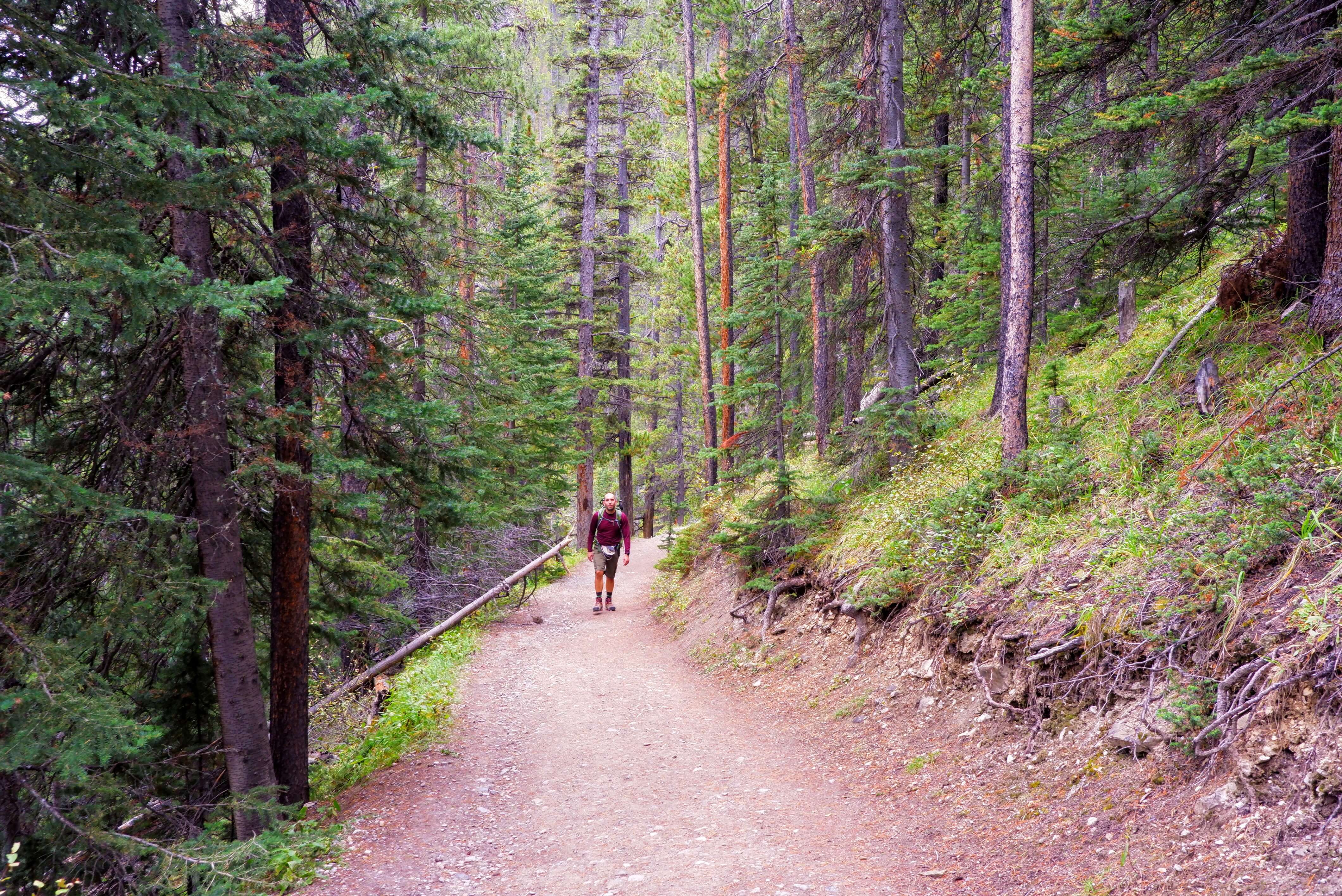
Once you get to the top, however, the view—featured above—is fantastic. There’s a neat museum and several viewing platforms, as well as a cafe-style restaurant and a bar called the Sky Bistro.
We grabbed a summit beer or two then rode the Gondola down. That ride costs $40 CAD or so per person but will save you about an hour of time while giving you some great views.
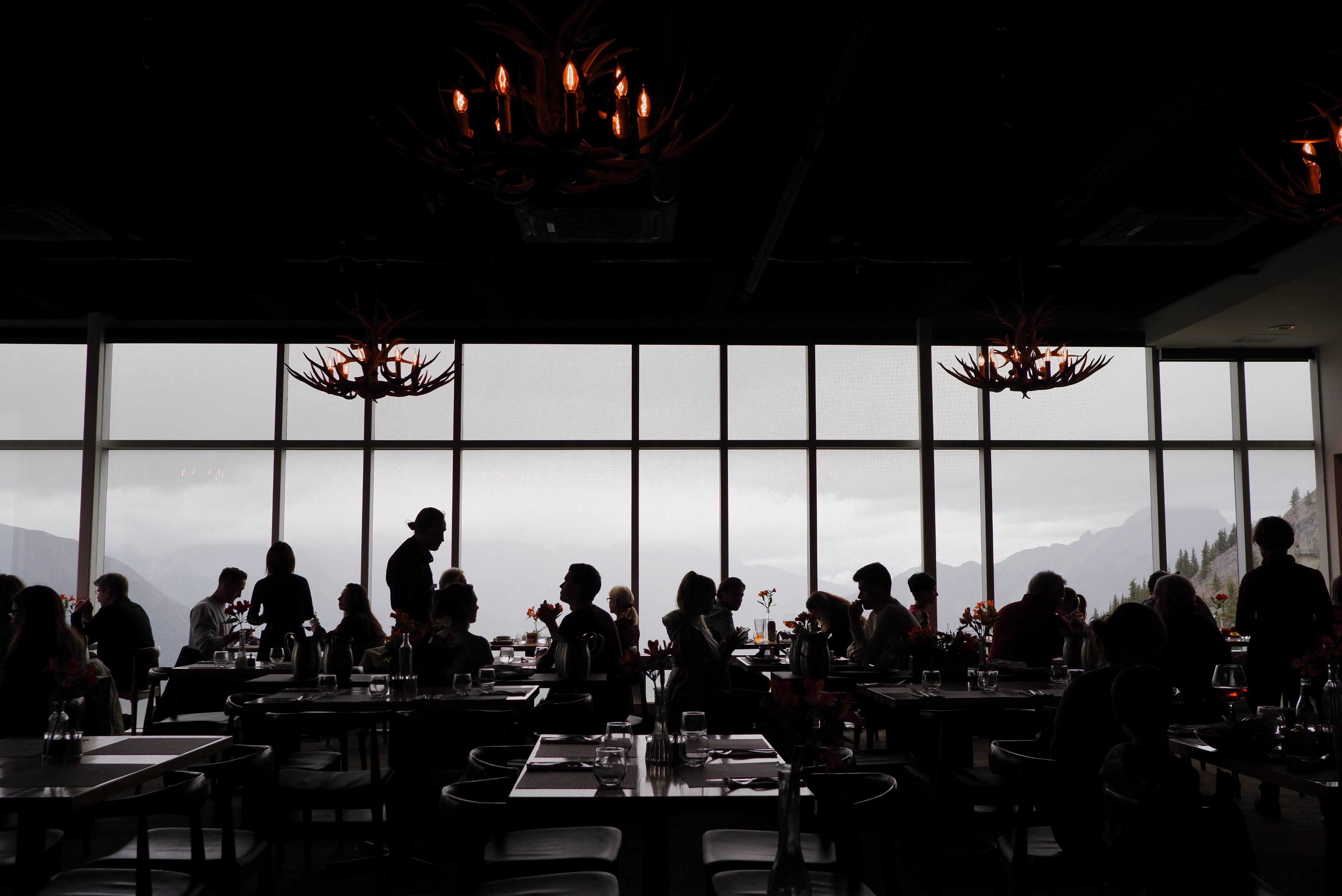
If you’d prefer an easier hike and want to avoid the crowds that build up in the morning, you can sneak up to Johnston Canyon for a late afternoon/early evening hike. It’s an out-and-back hike up a slot canyon that’s mostly paved and decked. It’s beautiful, but it’s also accessible directly by car, so it draws big crowds. By going there in the evening, you’ll get there as others are leaving and have it relatively to yourself.

We were not able to make it to Johnston due to a time crunch, but it’s a remarkable piece of North America that you ought to hit if you are able. If you want to make it more adventurous, hike it all the way to Ink Pots for an 8-mile (ish) out-and-back hike that will get you some solitude. You’ll likely need to drive to the trailhead, which is about half an hour north of the Banff city center.
Dinner
We ate at Indian Curry House on Banff Ave at Wolf. It’s tucked above the street, but the food was tremendous. Even for an Indian place, it was on the spicy side, but everything we had blew me away. The sauces were rich and complex; the meats were done without being tough. Plus, we probably had more naan bread than we needed. Highly recommended!
If you are planning to head to Moraine Lake for your first hike, as we were, you need to get there early. Plan on getting up and leaving between 5 and 5:30 a.m. This means you need to go to bed ASAP if you are insistent upon beating the crowds.
Day 2: Mo-raine Check
Our goal on day two was to summit Mount Eiffel. It’s a very hard hike under good conditions, but it would give us amazing views of Moraine Lake and the entire Valley of the Ten Peaks. It’s one of the most beautiful and photogenic spots on earth.
There are several good hikes that leave from the Moraine Lake parking lot—some of the best in the area—but the parking lot is not that large. Because Moraine Lake is so ridiculously beautiful, people literally sleep in their car so that they can post their adventure to Instagram. There are lines hundreds of people deep all day long to take pictures featuring themselves standing in outdoorsy-looking clothing.


We were there for the big hike, but the weather was not especially cooperative. The hike starts at the base of Larch Valley. Hikes to both Sentinel Pass and Eiffel Peak both start there. We ascended in the pre-dawn dark, but as we got higher, the weather got wetter and cooler. It was beautiful to be surrounded by the yellowing larch trees, but visibility was limited.

We got up to around 8,000 feet, maybe 1,900 feet short of the summit, but the weather was so bad that we felt it was dangerous to move forward. Instead, we opted for plan B. We cruised up the Icefields Parkway and hit a number of sights at the lower elevation. These were also less subject to the whims of the weather.
The Icefields Parkway
The Icefields Parkway is the highway connecting Banff and Jasper National Parks. National Geographic called it Alberta’s Best Road Trip for a reason. It’s majestic and overwhelmingly beautiful, but what makes it unique is that, unlike many mountain highways you may have been on, it’s relatively flat. You never feel like you are inches away from an untimely death. You have magnificent views from the road, but you aren’t forced to go up and over mountains. The space between them is sufficient for the road to calmly meander through this vast valley carved out by immense, inexorable ice. You are actually able to enjoy and immerse yourself in the hugeness of the place without getting sick. Views like this one captured from Adrian on Unsplash are around every corner.

If you visit Banff, you’ll likely need to travel up the Parkway for some hikes–we did. But, it’s worth spending at least a half-day just visiting many locations that are a short walk off of it. Since the weather further to the south wasn’t cooperating, we just drove to about the halfway point, turned around, and stopped at several amazing places.
Stop 1: Mistaya Canyon
Mistaya Canyon is a really interesting feature just a 5-10 minute walk from the Parkway. It’s all downhill from the road and a steady grade back up, so make sure you have good shoes. You’ll be cursing yourself otherwise. Water flows violently through Mistaya, cutting away rock as it works its way to lower ground. It’s like a lateral waterfall, really, and looking at it, you are filled with a morbid curiosity of what it might feel like to be tossed about in its continuous heave.
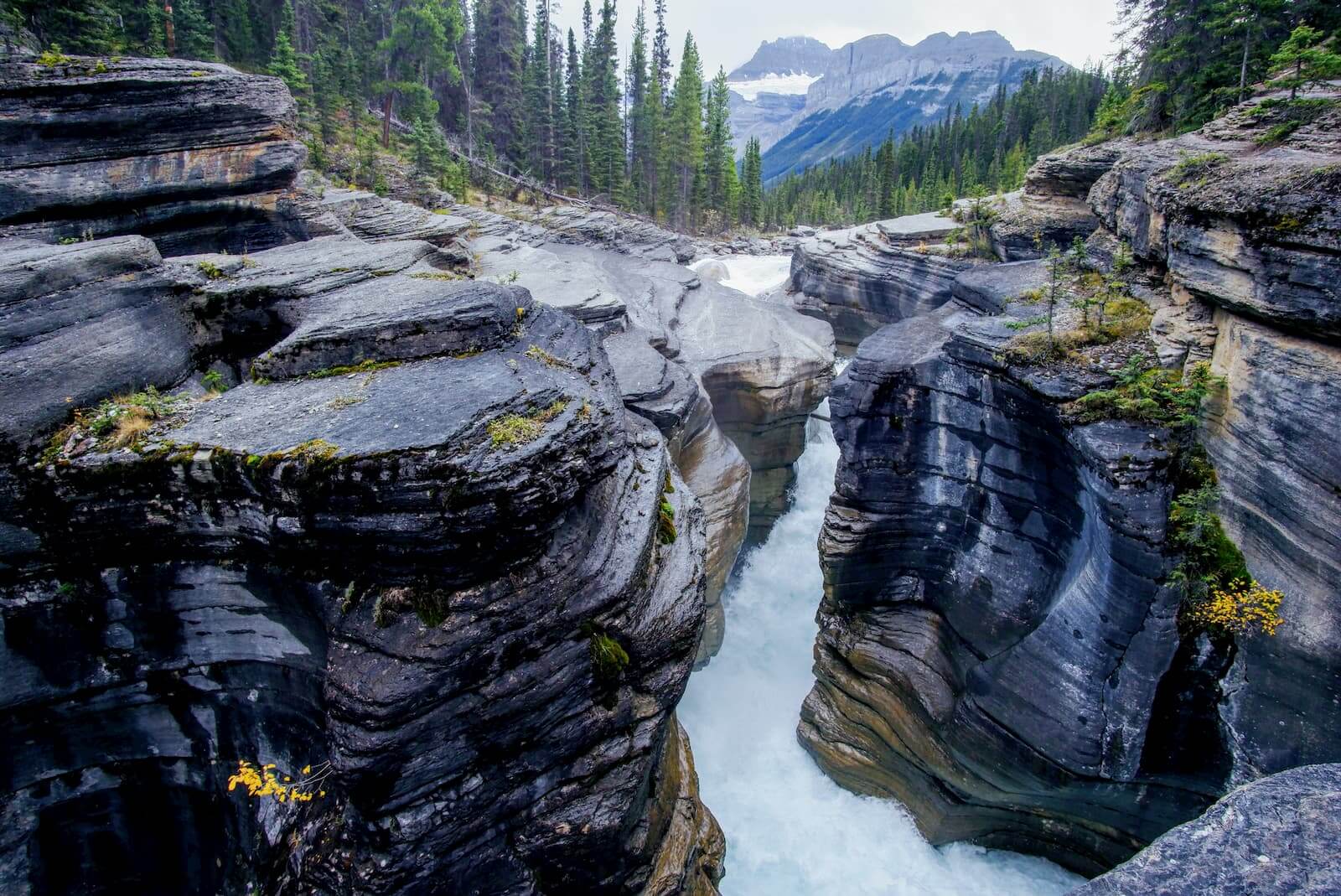
It’s a truly stunning place considering how accessible and relatively empty it is of other people.
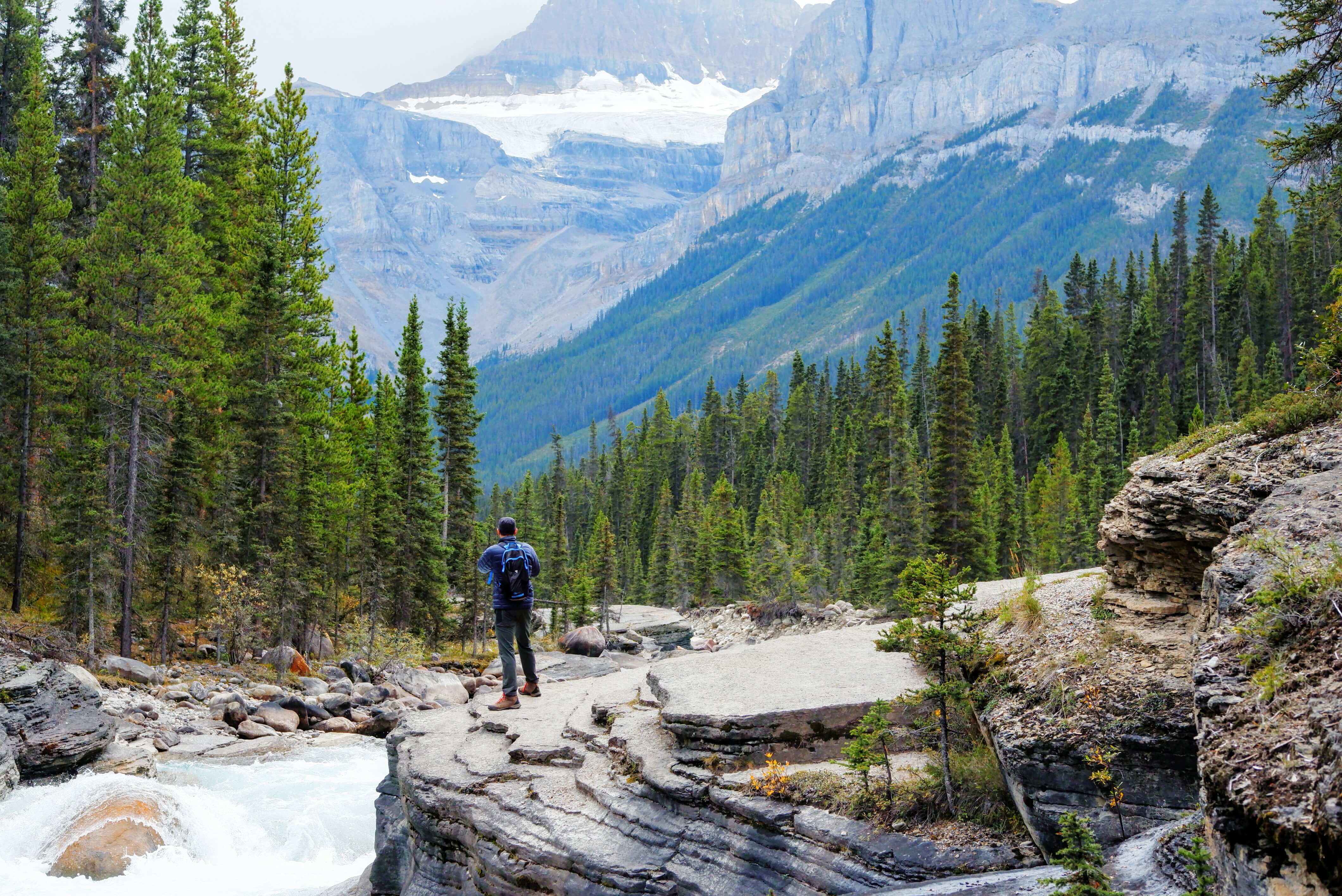
Stop 2: Peyto Lake
Peyto Lake is currently closed but once the viewpoint is open again in Aug. 2021, it’s a spot you do not want to miss. Like Moraine Lake, it’s a remarkable color, but with Peyto, you get to absorb it from both height and distance. This spot is remarkable because you can see the glacial flows that feed the lake. You can also see how water flows downstream, miles away, all the way to Mistaya Canyon. An unforgettable sight!

Stop 3: Herbert Lake
Other guides will recommend Bow Lake and Hector Lake, but we preferred Herbert Lake. This tiny body of water further down the Parkway was closer to the road, emptier, and more serene. You can step out of your car and be in the woods, and it’s just…quiet. Because the lake is smaller, it’s more still, reflecting the majesty around you. It’s a quick stop, but you should definitely drop by, if only for a few minutes.
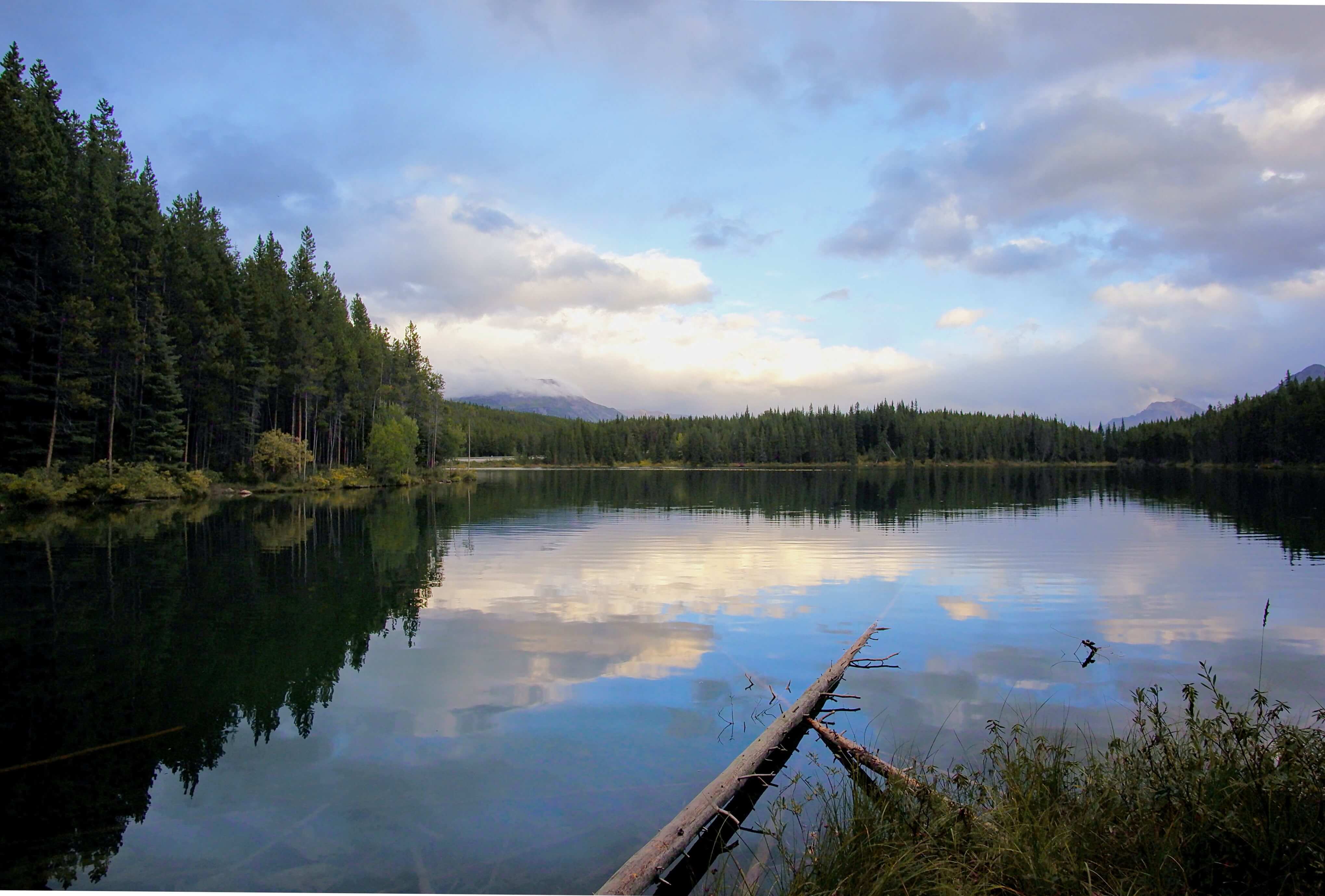
Stop 4: Lake Moraine, but Empty
If you didn’t wake up at 5 a.m. to get a parking space at Lake Moraine, you can get one easily in the late afternoon on your way back into Banff. There will still be people there carefully choreographing that perfect “spontaneous” shot, but there will be fewer of them. And it’s truly an amazing place, so you ought to check it out and explore a bit.
There is more than enough written about Moraine, so I won’t trouble you with any more. You still have one more stop before getting back to Banff.
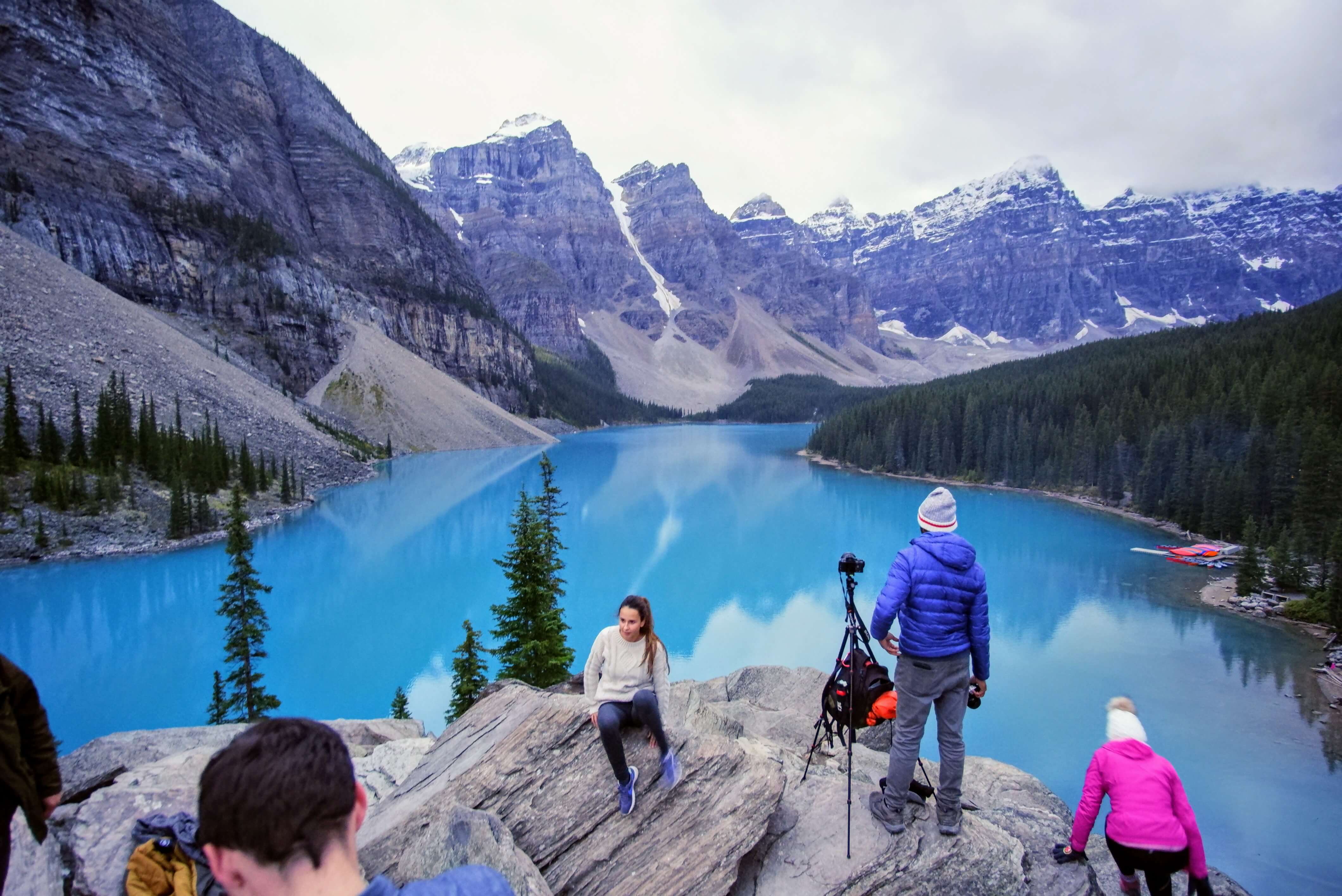
Stop 5: Dinner at the Fairmont
We were starving by this point, so we stopped and grabbed a nice dinner at the downstairs bar–Alpine Social–at the Fairmont. The food and drink selection was excellent, and the crowd was lively. Prices were lower than I would have expected as well.

(image via Wenhao Ji)
Day 3: Cirque Hike
You could spend months in the general vicinity of Banff and Kananaskis and never run out of new places to check out. With that said there are certain hikes and scrambles that offer views and experiences that stand out. Mostly, those standouts focus on high elevation so you can see more and farther. Cirque, like Eiffel, is a chance to get above 10,000 feet.

Cirque is gorgeous! To get there, you head back up the Icefields Parkway for an hour or so, getting once again to enjoy the constantly changing views. We saw a mamma bear crossing the road with two cubs about a mile before the trailhead.
The hike starts in a pretty heavy forest, but as you climb, you find your way to a burn line where fires have changed the environment.
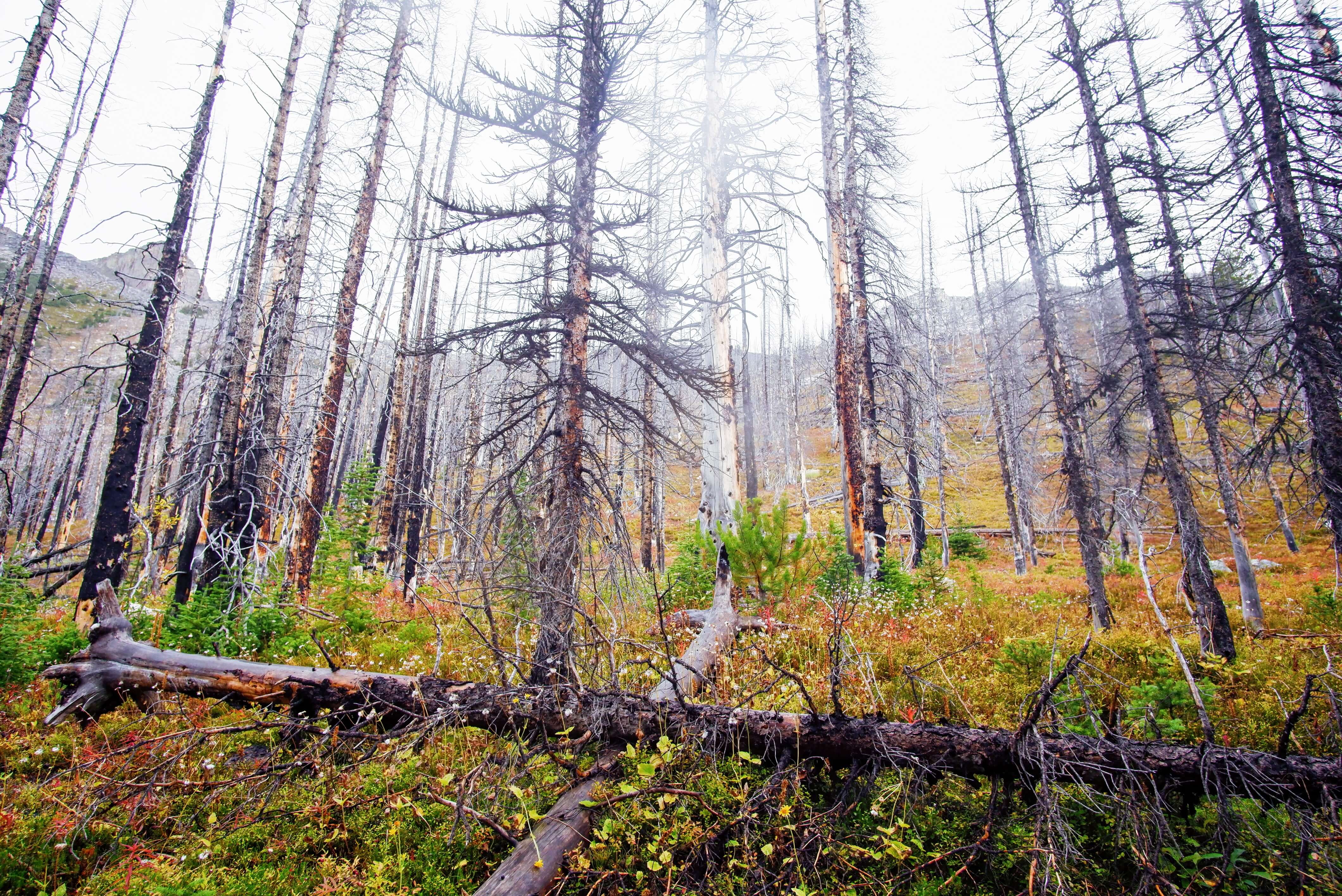
As you work your way up above the tree line, you turn and hear the calls of marmots chirping away just off the trail. There are magnificent views as soon as you get above the trees, but it’s odd that these mountains are big enough that there can be large, lonely valleys even where there are no trees.


As you get closer to the top, you’ll approach Helen Lake, a destination unto itself for those not inclined (as we weren’t) to face snow and 50 mph winds at the summit.


After several thousand feet of elevation on consecutive days, we were ready to rest.
